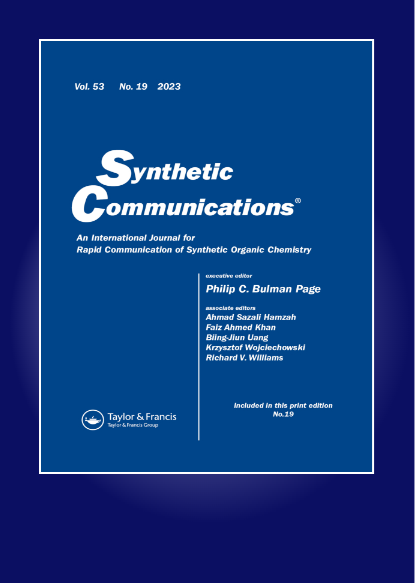Design of peptidomimetic library: In-silico screening, molecular docking, synthesis and characterization of hits for STEP61
IF 1.8
3区 化学
Q3 CHEMISTRY, ORGANIC
引用次数: 0
Abstract
Introduction
Striatal Enriched protein tyrosine Phosphatase (STEP61) plays a crucial role in motor reflexes, cognition, and Alzheimer’s pathology. Despite its significance, STEP61’s exploration via in silico methods has been limited.
Method
We identified STEP61’s binding site using induced fit docking, screened a peptidomimetic library of 32,800 compounds for potential inhibitors, and synthesized top hits. Docking studies emphasized binding requirements within STEP61’s catalytic domain and WPD loop. Molecular dynamics simulations highlighted the importance of hydrophobic contacts and hydrogen bonding in complex stability.
Results
High Throughput Screening yielded promising docking scores (-11.4 to −3.8), with XP docking showing scores ranging from −6.6 to −7.6, indicating potential interaction and activity. Cα residues maintained RMSD values below 2 Å throughout simulations, ensuring structural stability. These findings lay the groundwork for developing novel STEP61 inhibitors, offering promising avenues for Alzheimer’s disease therapeutics.
拟肽文库的设计:STEP61的硅基筛选、分子对接、hit的合成和表征
纹状体富集蛋白酪氨酸磷酸酶(STEP61)在运动反射、认知和阿尔茨海默病病理中起重要作用。尽管具有重要意义,STEP61通过计算机方法进行的探索仍然有限。方法采用诱导配合对接的方法确定STEP61的结合位点,筛选32800个拟肽文库作为潜在的抑制剂,并合成top hit。对接研究强调了STEP61催化结构域和WPD环内的结合要求。分子动力学模拟强调了疏水接触和氢键在络合物稳定性中的重要性。结果高通量筛选获得了有希望的对接得分(-11.4到- 3.8),XP对接得分在- 6.6到- 7.6之间,表明潜在的相互作用和活性。Cα残基在整个模拟过程中保持RMSD值低于2 Å,确保了结构的稳定性。这些发现为开发新的STEP61抑制剂奠定了基础,为阿尔茨海默病的治疗提供了有希望的途径。
本文章由计算机程序翻译,如有差异,请以英文原文为准。
求助全文
约1分钟内获得全文
求助全文
来源期刊

Synthetic Communications
化学-有机化学
CiteScore
4.40
自引率
4.80%
发文量
156
审稿时长
4.3 months
期刊介绍:
Synthetic Communications presents communications describing new methods, reagents, and other synthetic work pertaining to organic chemistry with sufficient experimental detail to permit reported reactions to be repeated by a chemist reasonably skilled in the art. In addition, the Journal features short, focused review articles discussing topics within its remit of synthetic organic chemistry.
 求助内容:
求助内容: 应助结果提醒方式:
应助结果提醒方式:


